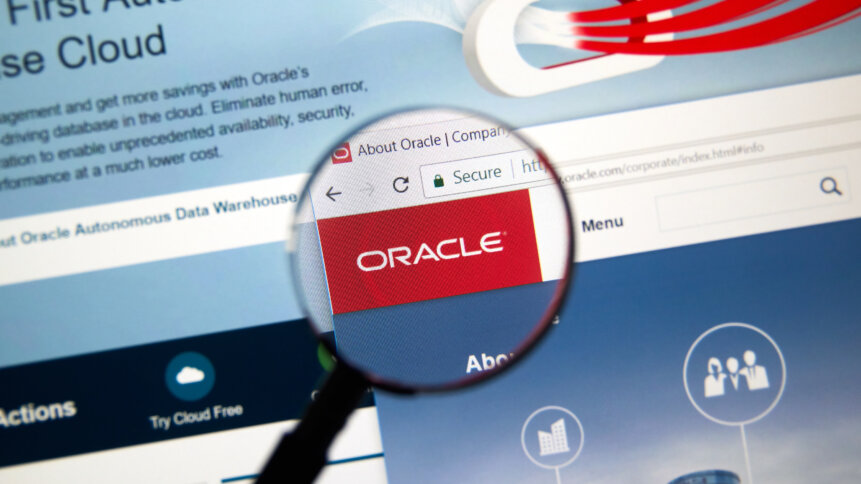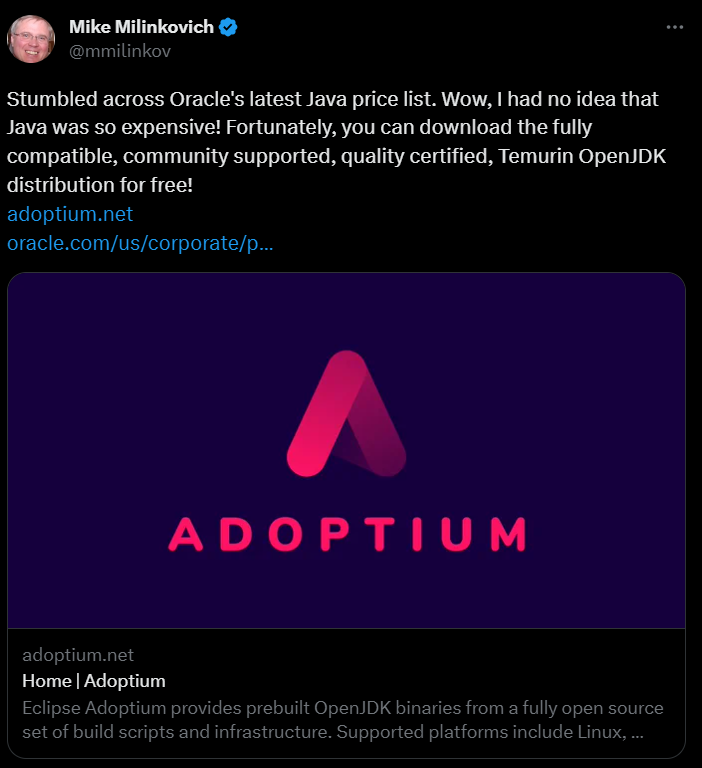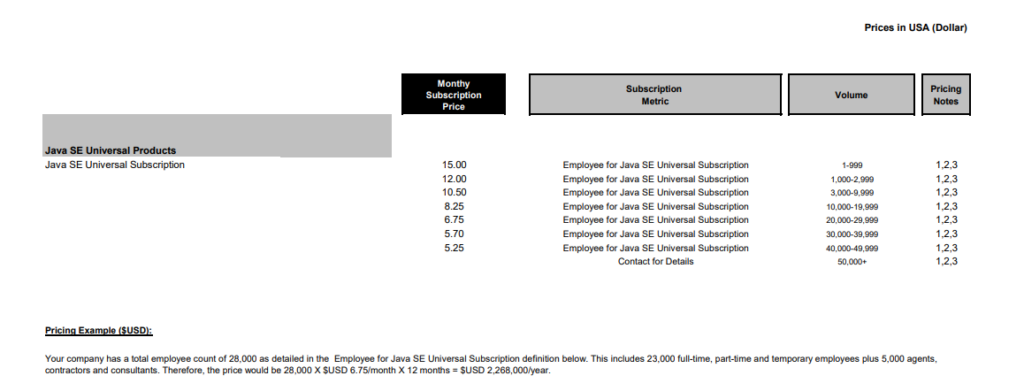What happens after Oracle Java licensing changes?

- Gartner finds that Java licensing changes by Oracle are two to five times more expensive for most organizations.
- One in five Java users can expect an Oracle audit in the next three years.
- Eclipse, Azul, and other providers may see increased Java downloads from new Oracle pricing.
Oracle has once again changed licensing rules for its widely-used Java product. On January 23, 2023, the company introduced a new license metric, the SE Universal Subscription, and the controversial new Java pricing plan is based on the customer’s total number of employees, rather than the number of employees using the software.
What this means for an organization is that regardless of its number of Java users or its server footprint, it must count every employee, contractor, consultant, and agent to determine its Java subscription bill. In short, an organization is potentially on the hook for a massive subscription fee increase that may have minimal benefit to the operation.
Big Red – which acquired Java with its buyout of Sun Microsystems in 2009 – said the new Java SE Universal Subscription is “a simple, low-cost monthly subscription that includes Java SE Licensing and Support for use on desktops, servers or cloud deployments.”
According to Oracle, the pricing starts at US$15 per employee per month for as many as 999 employees and drops as low as US$5.25 per month for 40,000 to 49,999 users.
Oracle cited an example in which a company with a total employee count of 28,000, including full-time and part-time employees and agents, consultants, and contractors, would be charged US$2.268 million annually.
However, the changes in the Java pricing model present opportunities for Java rivals Eclipse Foundation and Azul. Eclipse Foundation immediately seized on the opportunity to pitch its alternative. “Stumbled across Oracle’s latest Java price list,” tweeted Eclipse Executive Director Mike Milinkovich on January 27.

“Wow, I had no idea that Java was so expensive! Fortunately, you can download the fully compatible, community-supported, quality-certified Temurin OpenJDK distribution for free!” On the other hand, Azul said that it had seen a massive increase in inquiries about Java licensing since Oracle’s Universal pricing plan debuted.
“This is a major shock to the Java ecosystem,” Azul CEO Scott Sellers reportedly said. He described Oracle’s plan as one of the few instances he could think of in which pricing was decoupled from the value derived from the software. Azul’s Java pricing, Sellers noted, is based on how many people are using it.
New Oracle Java licensing, now what?
The changes primarily affect large companies with many employees, but will also significantly impact medium-sized businesses. Although Oracle promises to allow legacy users to renew under their current terms and conditions, the company will likely pressure users to adopt the new Java licensing model over time.

“Welcome to your latest Oracle bill, how would you like to pay today?”
YOU MIGHT LIKE

Oracle’s healthcare ambitions cloudy
Gartner had recently estimated that most organizations adapting to the new licensing terms by Oracle for Java should expect the per-employee subscription model to be two to five times more expensive than the legacy model. The global technology firm has spoken to clients since the new model was introduced in January.

Oracle Java SE Universal Subscription Global Price List. Source: Oracle
Having spoken to many clients, Gartner concluded that the steep increase in Oracle licensing costs for most Java users would mean that by 2026, more than 80% of Java applications will be deployed on third-party Java runtimes, up from 65% in 2023. Gartner also warned that Oracle is ready to test whether users comply with Java licensing terms as it sees them.
“One in five Java users can expect an Oracle audit in the next three years,” Gartner said. Nitish Tyagi, the co-author of the new Gartner research note, told The Register that for large organizations, the research analyst expects the increase to be two to five times, depending on the number of employees an organization has.
“Please remember, Oracle defines employees as part-time, full-time, temporary, agents, contractors as whosoever supports internal business operations has to be licensed as per the new Java Universal SE Subscription model,” he added. To top it off, Gartner also estimated that by 2026, one in five organizations using Java applications will be audited by Oracle, leading to “unbudgeted noncompliance fees.”
By the same year, more than 30% of organizations using Java applications won’t comply with their Oracle contracts, Gartner predicts. Added to that, pressure from Oracle on license costs will translate to 80% of Java applications deploying on third-party Java runtimes by 2026 – up from 65% in 2023, Gartner said.
Tyagi noted that clients are moving towards third-party Java runtimes such as Azul, Amazon Coretto, Eclipse Temurin, and IBM Semuru since the heavy pricing model was announced. “Surveys also indicate a decline in Oracle JDK usage and an increase in the use of other Java runtimes,” Tyagi added.










